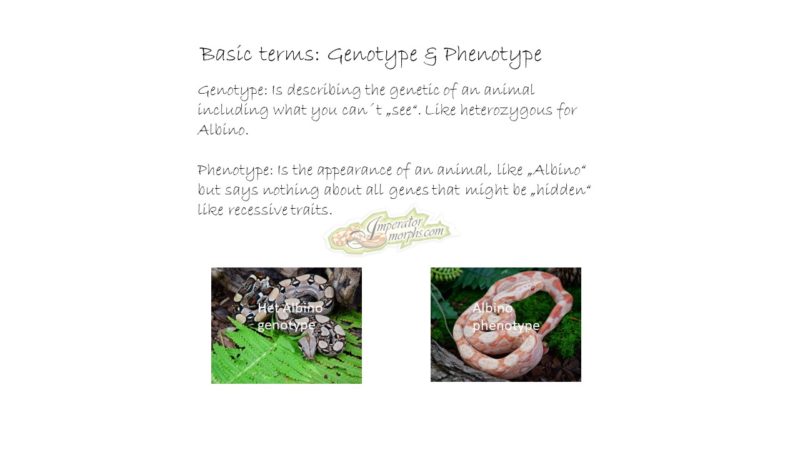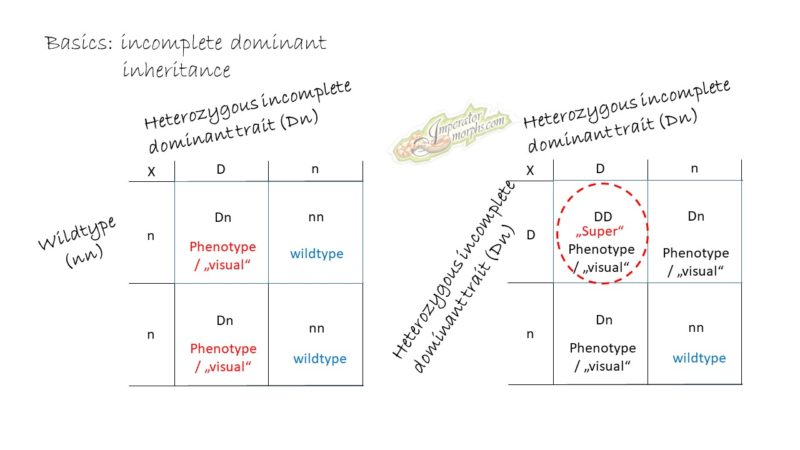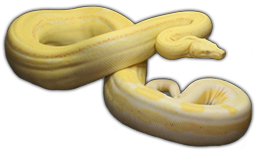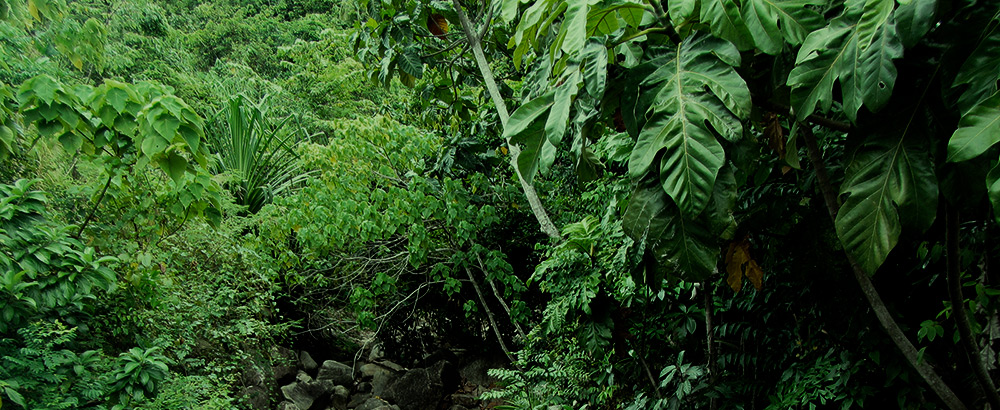We´re getting asked a lot of genetic questions and where you can read about the basics of boa morph breeding.
In our opinion it is mandatory to achieve this knowledge if you want to breed our loved Boa constrictor imperator to avoid unwanted results as health issues or an “overproduction” of mixed wildtype “poss het” boa imperator animals!
Thats why we decided to add this chapter to our website and are hoping it´s helpful for you and a succesful boa constrictor breeding.
Genotype & phenotype
Every now and then you can read the word phenotype and here we like to show you what it´s about and what´s the difference to a genotype boa.
A phenotpye only describes the appearance of a boa imperator but says nothing about the genes that might not be present as visual.
A genotype on the other hand is describing all genes whether its heterozygous, homozygous, dominant or recessive.
Example:
You can have a phenotype Albino boa imperator, but the genotype is homozygous Albino and heterozygous Anery.

Recessive (Het. x Het.):
50% and 66% possible het. animals are causing so many of your questions and we hope this chart will help a bit to understand more of boa poss het breedings.
To get to see a recessive genetic as visual, also called phenotype, it is necessary that both chromosomes of the chromosome pair consist out of the recessive gene à RR in this shown example.
In our example here we´re breeding a heterozygous (Rn) animal to a heterozygous (Rn) animal.

The result is:
25% RR (phenotype / visual)
50% wildtype (Rn) = heterozygous / „het“ animal
25% wildtype (nn) no present genetic marker
The challenge is, how to tell which animal of our wildtypes is a „het“ and which not, cause they all look like a wildtype boa. It´s simply not possible so all 75% babies of this litter are called „66% poss het.“. Cause it´s a 66% chance if you pick one wildtype animal out of this litter, that it´s a „real het“ (Rn) animal. 🙂
These genes are recessive: T+ Albino, T- Albino, Anery, Leopard, Sterling, Blood
So for all genes mentioned above, this example works the same. 🙂
Dominant:
Another form of inheritance, beside the recessive morphs, is the dominant inheritance. The dominant genes are much „easier“ to work with cause you see visual (phenotype) animals straight away and this already if its just present heterozygous!
There are several genes that are known as dominant as:
Arabesque, Scoria, IMG (Azabache), Inca.
Some like to put Hypomelanistic on this list too. It doesn´t change the way it inherits, but in our opinion there´s an obvious „Super Hypo“ that keeps us from putting them on here. 🙂
As mentioned above dominant traits are always visual even if present heterozygous. So there´s no need that both parents are carrying the same trait like it´s necessary to receive recessive phenotypes (visuals).

Our punnet square´s result in this case is:
50% dominant visuals (phenotype)
50% wildtype
So for all genes mentioned above, this example works the same.
Incomplete Dominant:
Another form of inheritance, beside the dominant morphs, is the incomplete dominant inheritance. The incomplete dominant genes are „easier“ to work with cause you see not only visual (phenotype) animals as heterozygous, you can also identify the homozygous animals which are the so called „Super“ morphs.
The incomplete dominant inheritance gets often mixed up and called co-dominant, like I´ve been teached this too many years ago. However this isn´t the correct term. In fact the way it works hasn´t changed, it´s just the declaration.
There are several genes that are known as incomplete dominant as:
Motley, Hypo, Jungle, Aztec, Roswell, Keltic, Key West, Labyrinth.
Some like to put Hypomelanistic on the dominant morphs list. It doesn´t change the way it inherits, but in our opinion there´s an obvious „Super Hypo“ that keeps us from putting them on there.
As mentioned above incomplete dominant traits not only express as visual as heterozygouse. There´s also a so called „Super“ form existing which is the phenotype of the homozygous form!
If only one part of the parents shows an incomplete dominant trait, the result is equal to a dominant trait (please see the example on the left side)

Our punnet square´s result on the right side is showing what happens if sire and dam are showing an incomplete trait:
25% „Super“ visuals homozygous (DD)
50% heterozygous visuals (Dn)
25% wildtype
So for all genes mentioned above, this example works the same.
We´re constantly working to extend this category and will keep you posted in our Blog if a new topic has been completed. Feel free to let us know what else you like to read about here.
Kind regards
Tim

